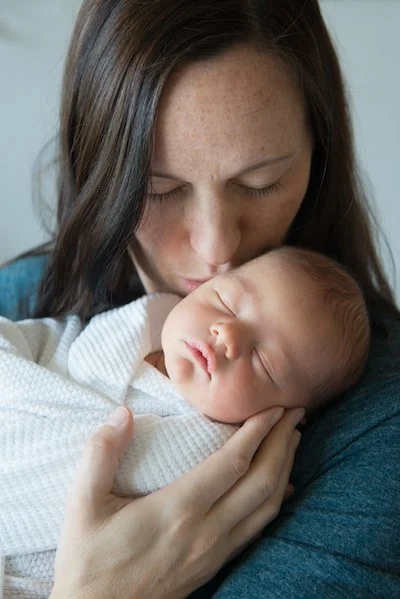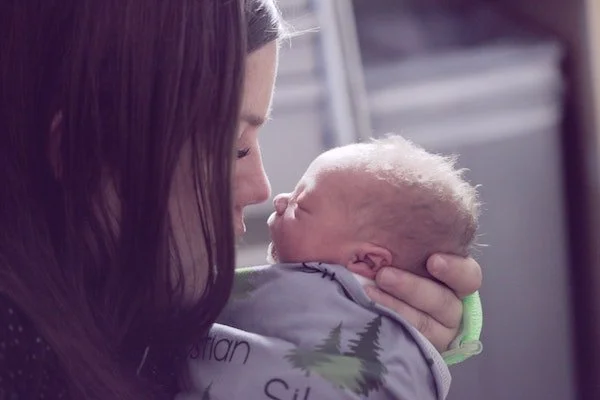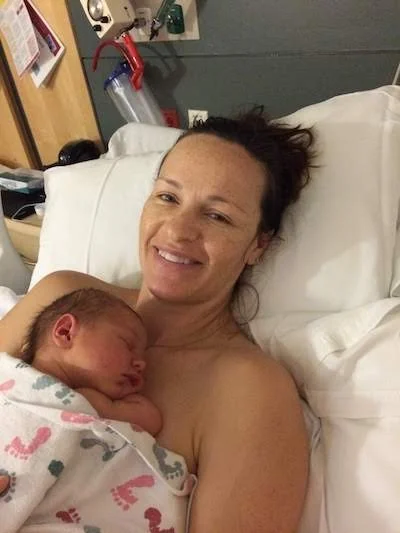Informed & Empowered C-Section Recovery
In the United States, the c-section rate is approximately 30% of all births and is the most common operating room procedure for all US hospitals. C-sections are a major abdominal surgery and like any other surgery, it’s important to become informed on what to expect and how to take good care of yourself as you heal so that you can recover fully and return to doing all of the things you love!On a personal note, I’ve had both a vaginal delivery and an unplanned c-section. I’m forever grateful for the option to have had my c-section when it was truly imperative for the health of my child and I. I’m thankful for my wonderful providers who gave us such important care.Because of the nature of my work, I was fortunate enough to have great physical therapists in my life who helped me through my process and reminded me of things like how to safely rebuild my strength, stamina, and mobility as well as care for my scar. Realizing that not everyone has this community or even an understanding of where to reach out, I felt compelled to create this guide as a place for you to begin finding resources and information that might help you as you prepare for or are healing through your own experience..
All expecting and those postpartum will progress quicker, with less chance of complications if they can be equipped with the necessary information and guidance to be an active participant in their recovery process. In this post, I will share:
Reasons why a C-section may be needed
What to do to be prepared and feel empowered if you are planning a C-section or if you have an unplanned c-section
Tips to help you optimize your recovery post c-section and why your pelvic floor still needs attention
Signs that you would benefit from some additional support
Why a C-section may be appropriate
There are many reasons why a c-section delivery might be the best option for an expecting mama. You and your health care provider will determine the best birthing option for your unique situation.
Common reasons for a C-section:
Pre-existing medical concerns
Baby is breech or in an abnormal position
Uterine rupture
Placenta previa (placenta covers the cervix)
Prolapsed umbilical cord
Previous c-section and not a candidate for VBAC
Baby is in distress
Carrying multiples
http://americanpregnancy.org/labor-and-birth/reasons-for-a-cesarean/
Preparing for C-section
If you are pregnant, even if you are not planning to have a C-section, it is a great idea to learn what to expect and become informed about the process in case you do end up having one. Once, baby is here, it can be more difficult to find the time and energy to learn and implement new and unexpected things!
Prepare your space.
Regardless of how you deliver, during the early days, you will be doing A LOT of sitting. Before your little one arrives, create “feeding stations” with all the goodies you might need while you are sitting with your baby. Definitely include water bottles and snacks! This will reduce the number of times you need to get up and down while your baby is feeding and sleeping. Locate furniture that is firm and supportive for sitting and that promotes upright posture where your feet can be supported on the ground. It can be easy to sink into squishy couches or find yourself partially sitting while feeding your baby in bed.I know this is SO tempting when you are feeling exhausted.However, prolonged periods of time sitting with poor posture as well as having to launch yourself out of these positions while holding your newborn can strain your incision, abdominals and lower back. If you set up yourself for success BEFORE your baby is here, it will be easier to follow these habits when it really counts.
Practice moving with intention.
Whether you’re planning a vaginal or a C-section delivery, it’s important to be mindful of your posture and maintain as close to neutral alignment of our pelvis and hips as you can.During pregnancy, your posture changes, your abdominal muscles lengthen and weaken, and there is increased pressure and workload on our pelvic floor, hips and surrounding supportive connective tissue. The key is to develop habits and patterns that will carry over into your postpartum days.Work on coordinating your breath and your core muscles (including the pelvic floor) when you move through your day. This will help reduce musculoskeletal pain, improve bladder and bowel function as well as serve as learned patterns that we can call upon and make it easier to continue postpartum.Some simple alignment and movement principles to consider when pregnant include:
Avoid locking your knees when standing
Stand with equal weight through both legs -avoid popping one hip to the side or leaning your hips forward
Sit with hips slightly higher than your knees and find “neutral pelvis”. When you can, use lumbar support to reduce slumping and rounding.
When you get up from a chair, lift your toddler, or lift a laundry basket, exhale and gently engage your pelvic floor muscles and lower abdominals to provide pelvic and lower back support
Breathe into your rib cage and lower abdomen instead of taking shallow breaths into your chest
Learn how to relax your pelvic floor and tune in to see if you are unconsciously holding tension - a healthy and functional deep core and pelvic floor can lengthen and relax as well as contract!
Keep moving and stay active! As long as you are cleared to exercise, it is wonderful to participate in prenatal strengthening and yoga classes
Find your support team.
Before you deliver, gather the people and providers you trust to be on your team. These may include; postpartum doulas, pelvic health physical therapists, postnatal massage therapists, acupuncturists and other members of the community that you would find supportive. If you develop these relationships before your baby arrives you will likely feel more comfortable reaching out when you need them. Then you can spend more energy taking care of you, your baby, and focusing on your recovery.
Postpartum Recovery
So, you’ve had a C-section! You are strong and amazing! What can you do NOW to help you restore your physical strength and function and get back to those things you love to do in addition to caring for your baby?
Connect to your breath.
In the early days, one of the best things you can do is tune in to your breath! This can help you feel calm and reduce anxiety and stress, help to gently mobilize your tissues, and help you coordinate your movement patterns. (I personally don’t remember thinking about mine at all during those early days and I really wish I had someone remind me of this.)Here are some times you can be aware of your breathing:
While sitting or lying in bed, take gentle belly breaths and when you inhale visualize gently breathing into your side ribs, lower abdomen and your pelvis
When you are getting in and out of bed, roll to your side and exhale as you use your arms to help you come to sitting with shoulders and hips aligned
When lifting your baby, car seat or diaper bag, use your legs and exhale as you lift to help reduce excessive strain from increased intra-abdominal pressure
If possible, avoid lifting anything heavier than your baby for several weeks as you slowly build your strength as your tissues heal. (this is tricky if you have a toddler to care for as well but just do your best)
Care for your Scar.
Scar tissue mobilization is an important part of fully recovering from your C-section. The incision travels through seven layers of tissue from the skin through the muscles, fascia, and all the way to the uterus. Scar tissue is formed all along this pathway and can lead to restriction in mobility and impaired muscle activation. The incision also cuts through the nerves in the area and can lead to decreased sensation, numbness and or hypersensitivity along the scar and in surrounding areas.Since the scar tissue can affect abdominal and pelvic floor fascial tissues, perform gentle scar tissue mobilization daily to keep your tissues flexible and mobile to promote optimal function and recovery of these muscles.When your scar is fresh, find a pillow or folded blanket that you can use to hug or hold against your abdomen when you cough or sneeze to protect the scar from excessive intra-abdominal pressure and help relieve pain. You can also use this when rolling in and out of bed initially. Before your scar is healed, you can start gentle mobilization through performing mindful lower abdominal breaths.Once the scar is healed, you can begin to work on your scar tissue with your hands.
Use your fingers or your thumbs, gently press down and move them in small circles on and around the scar. You can also move vertically and horizontally
You might want to use some lotion to help ease the friction but you do not need to. You may feel some restriction in your tissues along the scar and in areas surrounding your lower abdomen
If your scar is sensitive or tender, you can also perform desensitization techniques such as brushing a wash cloth or cotton ball over your scar to help with the sensitivity
If touching your scar is emotionally difficult at first, you can try going over your clothing just gently touching the area initially and work into it slowly. Baby steps are just fine!
The key is to be consistent. Sometimes, it helps to attach this task to something else you already do during your day such as; following a shower, after you brush your teeth, or right before bed to help you remember.
Return To Movement and Exercise Safely.
Just as in pregnancy, it is important to be mindful of your posture and alignment as you begin to become more active postpartum. Due to changes in your center of gravity and posture during pregnancy, you will likely need to rediscover your “neutral position” for your pelvis, trunk and rib cage. When our pelvis and diaphragm are well aligned, we can more productively coordinate our breath and activation of the deep core and pelvic floor muscles.
Some things to consider (both sitting and standing) include:
Start with finding neutral pelvic alignment: your front hip bones and your pubic bone are nearly along the same plane and you have a gentle curve in your lower back
Then stack your rib cage over your pelvis
Bring shoulders over hips
Dr. Jenn treating patient at Root To Rise in Scarborough, Maine
Try using a wall or mirror to help you get a feel for these positions. Once you practice this alignment, then work on your breathing in this position.You can begin to practice engaging your pelvic floor muscles as you exhale and then relaxing them on your inhale.Once your scar is healed at around 6-8 weeks, you can add more dynamic strengthening and stretching exercises as you are able and this will depend on when your body is ready to manage increased demand and load. It is important to give yourself time, listen to your body, and ask for help when you need it. A pelvic health PT can help guide and progress you safely.
What are some signs that you may need more support?
It’s always a good idea to have a postpartum evaluation with a specialized pelvic floor physical therapist. This should really be the standard of care for all women following childbirth. Since a C-section is a major abdominal surgery, it only makes sense that rehabilitation would be imperative for optimal recovery!There are some very common but not normal symptoms that you may experience following a C-section:
Leaking urine with cough, sneeze, movement or a strong urge
Leaking feces, flatulence with position changes
Having strong sudden urge to pee or have a bowel movement
Having to pee frequently after first few weeks postpartum (less than every 2 hours)
Pain at incision site or abdominal pain
Pelvic pain with intercourse
Pain with urination or bowel movements
Low back, hip or sacroiliac pain
Constipation
Difficulty returning to exercise
Diastasis recti (abdominal muscle widening)
Pelvic health physical therapy can help you with all of these symptoms and more! You don’t have to manage your recovery process alone and my hope is that you return doing all of the things you love to do while feeling empowered, strong, and more connected to your body than ever before.
Read more about C-Section recovery in our latest blog post here:
Why Choose Root To Rise Physical Therapy & Pelvic Health
At Root To Rise, we specialize in pelvic floor physical therapy for c-section recovery and beyond. Our personalized, whole-body approach blends physical therapy, yoga, mindfulness, and compassionate support to help you heal and thrive—prenatally, postpartum, and throughout your wellness journey.
📍 We proudly serve patients in Saco, Scarborough, and Bath, Maine, with both in-person sessions.
✨ Ready to start your recovery with expert pelvic floor therapy and support.? Book a free consultation with our Scarborough, Maine pelvic floor specialists today and learn how we can support you.
Learn more about C-Section and perinatal care in our previous blog post below.
At Root to Rise Physical Therapy & Pelvic Health, we believe in a holistic approach to physical therapy. We are located in Scarborough, Saco, and Bath, and are here to support you!






